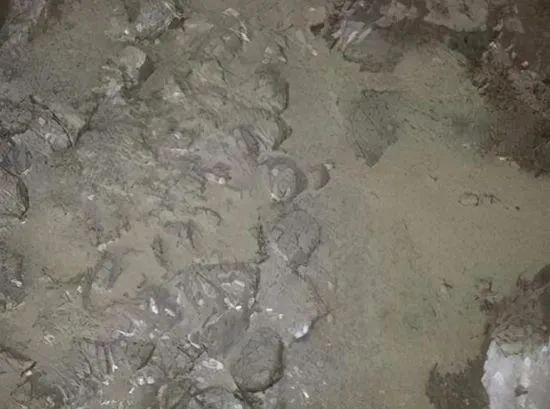The use of concrete admixtures is a major advancement in concrete technology. It can improve the quality and performance of concrete, improve the construction speed and quality of projects, save cement and energy, and has significant economic and social benefits. The application of polycarboxylate water-reducing agents has led to a breakthrough development in concrete technology. In order to improve the construction performance, mechanical properties and durability of concrete, materials such as concrete admixtures and admixtures have received great attention. Admixtures continue to innovate and progress with the development of concrete. Currently, polycarboxylic acid admixtures are widely used in concrete. It is widely used in structures. The high water reduction rate and high adaptability of polycarboxylic acid can effectively improve the performance of concrete. In practical applications, it facilitates transportation and improves construction speed and quality. Therefore, the application of polycarboxylate water-reducing agent not only greatly improves economic benefits, but also improves the quality and durability of modern building structures in practical applications.
At present, the application of polycarboxylic acid water reducer is already quite common, but there are still many problems in practical application. Considering the economic benefits, the current choice of water reducer can only pursue high water reduction rate and low price. Therefore, the most widely used polycarboxylic acid water reducer is directly compounded with some auxiliary materials using the high water reduction mother liquor synthesized at normal temperature, or adding a certain amount of collapse-preserving mother liquor to the high water reduction mother liquor synthesized at normal temperature and then compounding some auxiliary materials.
Now, we will discuss the problems and solutions of polycarboxylic acid water reducer in practical application
◆Sensitive to water usage
When using high-water-reducing polycarboxylate water-reducing agent to produce high-fluidity concrete, sometimes, although the concrete does not bleed, it is also prone to segregation and slurry, with coarse aggregate sinking and mortar or pure paste floating on the surface of the mixture. If this mixture is used for pouring, there is no need for vibration, and stratification and segregation are also obvious. The uniformity of the concrete cannot be guaranteed, and obvious defects such as holes and roughness will appear on the surface of the concrete structure after forming. The mechanical properties and durability of the concrete will also be seriously reduced. This is mainly because the water reduction rate of the water reducer is relatively large, so the state of the concrete is more sensitive to the amount of water used, so the amount of water reducer and the amount of water used must be strictly controlled when using it. It is also possible to reduce the solid content of the polycarboxylate water-reducing agent by compounding means, increase the amount of water reducer per cubic meter of concrete, so as to reduce the sensitivity of the water reducer and make it easier to find the optimal amount of water reducer.
◆There is a slow release phenomenon
During the application of polycarboxylate water reducer, sometimes the concrete just out of the machine has good wrapping and workability, but after a period of time, when it arrives at the construction site, the concrete begins to bleed, segregate, or even bleed. The polycarboxylate water reducer has a slow release effect, which is mainly caused by the slump-retaining component of the polycarboxylate water reducer. At this time, timely adjustments can be made by appropriately extending the mixing time, reducing the slump of the concrete out of the machine, and reducing the amount of water reducer. Adjust the polycarboxylate water reducer formula as soon as possible and appropriately reduce the slump-retaining component. In addition, attention should be paid to ensuring the stability of the raw materials of concrete to avoid large fluctuations.
◆More sensitive to temperature
When the temperature is low, even a small fluctuation in the amount of water-reducing agent will cause a large change in the state of concrete, especially when using conventional high-water-reducing polycarboxylate water-reducing agents, which can easily cause bleeding and segregation of concrete. In areas in the west where the temperature difference between morning and evening is relatively large, the amount of polycarboxylate water-reducing agent added at night is even only 60% of that during the day. This is mainly related to the reduced activity of polycarboxylate water-reducing agent and cement when the temperature is low. When this happens, the amount of water-reducing agent should be adjusted in time and the concrete mixing time should be extended.
◆Appearance bubble problem
When using polycarboxylate water reducer to cast concrete, sometimes after removing the mold, it is found that there are many bubbles on the surface of the concrete, which affects the appearance quality. If the bubble problem is solved by adjusting the water reducer, it can be solved from two aspects:
- (1)Compound an appropriate amount of defoamer. Because the polycarboxylate water reducer itself has a little air entraining effect, adding a defoamer can eliminate some small bubbles on the surface of the concrete;
- (2)Appropriately reduce the slump-retaining component in the water reducer. This can eliminate some medium bubbles on the surface of the concrete, because when the slump-retaining performance is too good, when the concrete has been poured into the mold, the water reducer is still reacting with the cement, which will produce certain bubbles.
Of course, there are many reasons for the generation of bubbles on the surface of concrete, and the bubble problem can also be solved by adjusting the mix ratio of concrete, adjusting the slump size, changing the construction process and vibration method, and using water-based release agents.
◆Sensitive to mud content
Polycarboxylate water reducers are more sensitive to the mud content in concrete raw materials than other types of water reducers. The mud content in sand and gravel will have a huge negative impact on the slump retention and water reduction performance of polycarboxylate water reducers, directly affecting the various properties of concrete and causing inconvenience to actual production. This is mainly because polycarboxylate water reducer molecules will be adsorbed in large quantities by the clay interlayer structure, while the adsorption amount of other types of water reducer molecules is relatively small. However, this situation can be solved by increasing the dosage of water reducers and increasing the slump retention components in polycarboxylate water reducers.
◆Effect of water consumption on the properties of polycarboxylic acid concrete mixture
The influence of water consumption is very obvious. In actual concrete engineering applications, if the water consumption is increased by 1-3 kg/m3, the concrete will have serious bleeding, which will cause defects such as roughness, sand, and holes on its surface. The uniformity of concrete pouring and construction quality cannot be guaranteed, thus reducing the strength and durability of the concrete structure.
◆Polycarboxylic acid concrete is prone to delamination and segregation
In most cases, adding polycarboxylate water-reducing agent to concrete will greatly reduce the viscosity of the paste. At the same time, even if the dosage and water consumption of polycarboxylate water-reducing agent are optimal and no bleeding occurs, the concrete is prone to stratification and segregation, which is mainly manifested in the separation of coarse aggregate from mortar and pure paste and a large amount of sinking. This type of concrete mixture has no vibration during the pouring of concrete engineering, and the stratification and segregation phenomenon is also very obvious.
◆Not ideal compatibility
Traditional water reducers such as naphthalene, aliphatic, lignin sulfonate, aminosulfonate, etc. can be mixed in any proportion to meet various concrete preparation requirements. These traditional water reducers are not only well soluble in water, but also can achieve excellent superposition effect when used in combination. Polycarboxylic acid water reducer has great limitations. It can only be used in combination with traditional water reducer lignin sulfonate, and has poor compatibility with other traditional water reducers. If used in combination with other types of traditional water reducers, it will not only be difficult to achieve superposition effect, but also make the fluidity of concrete very poor, the water consumption will increase significantly, the slump will be seriously lost, the concrete will be dry and difficult to unload, and the strength and durability of the concrete will be seriously affected.

Polycarboxylic acid water reducer has many excellent properties, which are unmatched by other series of water reducers. The molecular structure of polycarboxylic acid water reducer is special and flexible, and its unique molecular structure can greatly improve the dispersion performance of concrete cement particles, and also achieve the purpose of multifunctionality. Even if the concrete has the characteristics of efficient dispersion retention, reduced viscosity, and reduced shrinkage, the performance of all aspects of concrete has been greatly improved and improved, and it has very good development and application prospects.
Polycarboxylic acid high-performance water reducer has outstanding advantages and strong application potential in the use of construction engineering concrete, but there are also many shortcomings. Users only need to be good at using its advantages, improving its shortcomings in application, and correctly understanding and applying polycarboxylic acid high-performance admixtures to obtain the best results.
Author: Li
